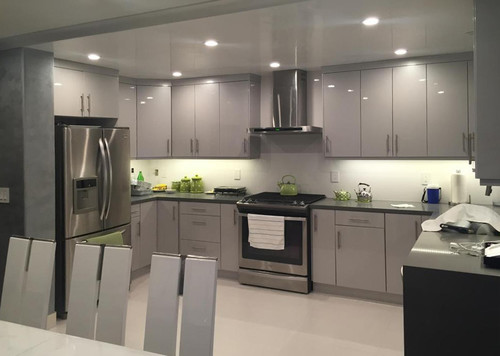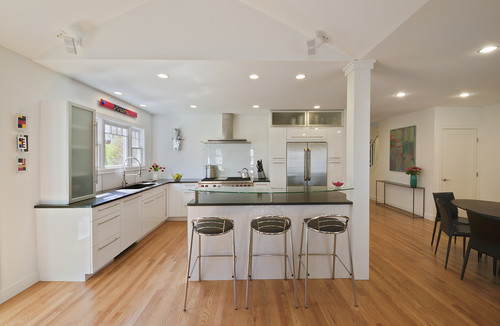

How to Fix Thermofoil Cabinets Peeling
In recent years, thermofoil cabinets have gained popularity due to their affordability, durability, and attractive finish. However, one of the challenges homeowners face is thermofoil cabinets peeling. This issue can detract from the aesthetic appeal of your kitchen and compromise the functionality of your cabinets. In this introduction, we will briefly discuss the causes of peeling cabinet laminate, common problems associated with peeling cabinets, and the importance of timely kitchen cabinet repair.
Thermofoil cabinets peeling often occurs due to a combination of factors such as heat, moisture, and age. Exposure to high temperatures, humidity, or water damage can weaken the adhesive bond between the thermofoil layer and the cabinet’s core material, resulting in peeling laminate cabinets. Furthermore, as cabinets age, the adhesive used in their construction may deteriorate, making them more prone to peeling.
Peeling cabinets not only affect the visual appeal of your kitchen but can also create functional problems. For instance, peeling cabinet laminate may expose the underlying particleboard or MDF core, making it susceptible to water damage, swelling, and warping. Additionally, cabinet peeling can lead to issues with opening and closing doors or drawers, as well as damage to stored items.
Timely cabinet door repair is essential to maintain the longevity and appearance of your thermofoil cabinets. Addressing peeling cabinets as soon as they are noticed helps to prevent further damage and saves you from potentially costly and time-consuming replacement projects. Moreover, repairing laminate cabinets peeling can also enhance the overall value and appeal of your home.
In the following sections, we will guide you through the process of identifying the extent of damage in your thermofoil cabinets, gathering the right tools and materials, and executing a step-by-step repair process. We will also discuss preventive measures and when to seek professional help for your kitchen cabinet repair needs.
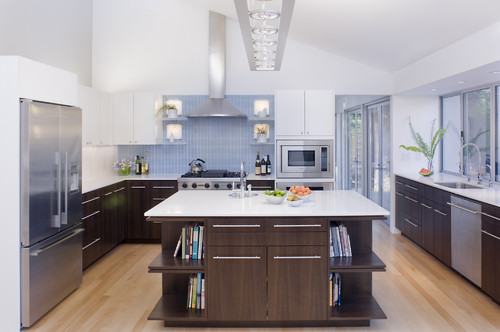
Identifying the Extent of Damage in Thermofoil Cabinets
Before embarking on a kitchen cabinet repair project, it is crucial to assess the extent of damage caused by thermofoil cabinets peeling. This evaluation will help you determine the appropriate course of action, whether it involves a simple repair or necessitates a more comprehensive intervention. In this section, we will discuss how to evaluate the severity of cabinet peeling, assess laminate cabinets peeling for effective repair, and consider key factors in thermofoil cabinet doors peeling evaluation.
- Evaluating the Severity of Peeling Cabinets:
Start by closely inspecting the affected thermofoil cabinets peeling areas. Note the size, location, and degree of peeling laminate cabinets. Minor peeling may only affect the corners or edges, while severe cases can involve large sections of the cabinet surface. Take photographs of the affected areas to document the damage and aid in your repair planning process.
- Assessing Peeling Cabinet Laminate for Effective Repair:
After determining the severity of the cabinet peeling, you need to assess the condition of the underlying core material, such as particleboard or MDF. Check for signs of water damage, swelling, or warping. If the core material is severely damaged or structurally compromised, a simple cabinet door repair may not suffice, and replacing the affected components may be necessary.
- Key Factors in Thermofoil Cabinets Peeling Evaluation:
Consider the following factors when evaluating the extent of damage in your thermofoil cabinets:
a. Age and Material Quality: Older cabinets or those made from lower-quality materials may be more prone to laminate cabinets peeling and may require more extensive repairs or replacement.
b. Environmental Conditions: Cabinets exposed to high humidity, heat, or moisture are more likely to experience thermofoil cabinet doors peeling. In such cases, it is essential to address the underlying issues to prevent future damage.
c. Frequency of Use: Frequently used cabinets, such as those under sinks or near cooking appliances, may experience more wear and tear, leading to cabinet peeling.
By accurately assessing the extent of damage in your thermofoil cabinets, you can devise an appropriate kitchen cabinet repair plan, ensuring the most effective and lasting results. In the next section, we will discuss the essential tools and materials required for repairing peeling cabinets.
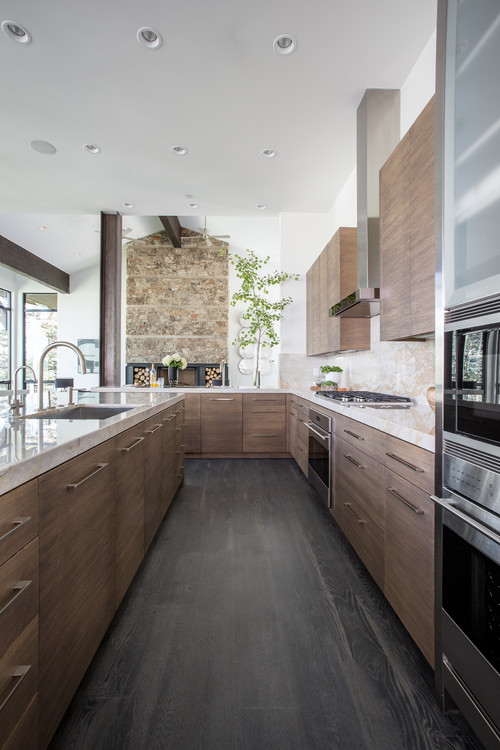
Essential Tools and Materials for Kitchen Cabinet Repair
To achieve professional results when repairing thermofoil cabinets peeling, it is essential to have the right tools and materials on hand. In this section, we will discuss how to gather the necessary supplies for cabinet peeling repair, select the best products for peeling cabinet laminate, and prepare your workspace for the thermofoil cabinet doors peeling repair process.
- Gathering the Right Supplies for Peeling Cabinets Repair:
Before starting your cabinet door repair, gather the following tools and materials:
a. Utility knife or scraper: To remove loose or damaged peeling laminate cabinets. b. Sandpaper (medium and fine grit): For smoothing and preparing surfaces. c. Clean cloth and mild soap: To clean the cabinet surface before repair. d. Adhesive or contact cement: To reattach the laminate cabinets peeling. e. Laminate or veneer: For patching or replacing damaged thermofoil. f. J-roller or soft-bristle brush: To apply even pressure when attaching laminate. g. Paintbrush or foam brush: For applying adhesive or contact cement. h. Clamps or painter’s tape: To secure the laminate during the bonding process. i. Protective gear: Gloves, safety glasses, and a dust mask for personal safety.
- Selecting the Best Products for Peeling Cabinet Laminate:
Choose high-quality products for your kitchen cabinet repair to ensure lasting results. When selecting adhesive or contact cement, opt for a product specifically designed for bonding thermofoil or laminate to wood or MDF surfaces. If you need to patch or replace the damaged thermofoil, try to find a laminate or veneer that closely matches the existing color and pattern of your cabinets.
- Preparing Your Workspace for Thermofoil Cabinets Peeling Repair:
Before beginning the repair process, prepare your workspace to ensure safety and efficiency:
a. Clear the area around the affected cabinets, providing ample space to work. b. Remove any items stored within the peeling cabinets to prevent damage. c. Ensure proper ventilation by opening windows or using a fan to dissipate fumes from adhesives or solvents. d. Lay down drop cloths or plastic sheeting to protect countertops and floors from debris or spills.
With the right tools, materials, and workspace preparation, you are now ready to tackle the task of repairing your cabinet peeling. In the next section, we will guide you through a step-by-step process for fixing thermofoil cabinets peeling and achieving professional results.
Step-by-Step Guide to Fixing Peeling Cabinets
Repairing thermofoil cabinets peeling can be a straightforward process if you follow the right steps. In this section, we will provide a detailed, step-by-step guide to fixing peeling cabinets, including preparing the surface, repairing the peeling cabinet laminate, and adding finishing touches for a professional kitchen cabinet repair outcome.
- Preparing the Surface of Thermofoil Cabinets Peeling:
a. Using a utility knife or scraper, carefully remove any loose or damaged laminate cabinets peeling. Be cautious not to damage the underlying core material. b. Sand the exposed core material using medium-grit sandpaper to create a smooth, even surface for the adhesive to bond. c. Clean the cabinet surface with a cloth and mild soap, removing any dust, grease, or debris. Allow the surface to dry completely before proceeding.
- Repairing Peeling Cabinet Laminate: Techniques and Tips:
a. If the peeling laminate cabinets is still in good condition, apply a thin, even layer of adhesive or contact cement to both the cabinet surface and the back of the laminate, following the manufacturer’s instructions for application and drying times. b. Carefully align the laminate with the cabinet surface, and use a J-roller or soft-bristle brush to apply even pressure, ensuring a strong bond and eliminating air bubbles. c. Secure the laminate in place using clamps or painter’s tape, and allow the adhesive to cure according to the manufacturer’s recommendations.
d. If the thermofoil cabinets peeling requires patching or replacement, cut a piece of matching laminate or veneer slightly larger than the damaged area. Sand the edges for a smooth finish. e. Apply adhesive or contact cement to both the cabinet surface and the back of the replacement laminate, following the manufacturer’s instructions. f. Position the replacement laminate over the damaged area, ensuring a seamless fit, and use a J-roller or brush to apply even pressure for a strong bond. Secure with clamps or painter’s tape, and allow the adhesive to cure.
- Finishing Touches for Kitchen Cabinet Repair:
a. Once the adhesive has cured, remove any clamps or tape, and use a sharp utility knife to carefully trim any excess laminate, ensuring a clean, professional finish. b. Sand the edges of the repaired area with fine-grit sandpaper for a seamless transition between the existing and new laminate. c. Wipe down the repaired cabinets with a clean cloth to remove any dust or residue.
By following this step-by-step guide, you can successfully repair your thermofoil cabinet doors peeling and restore the appearance and functionality of your kitchen cabinets. In the next sections, we will discuss preventive measures, when to seek professional help, and concluding thoughts on cabinet door repair.
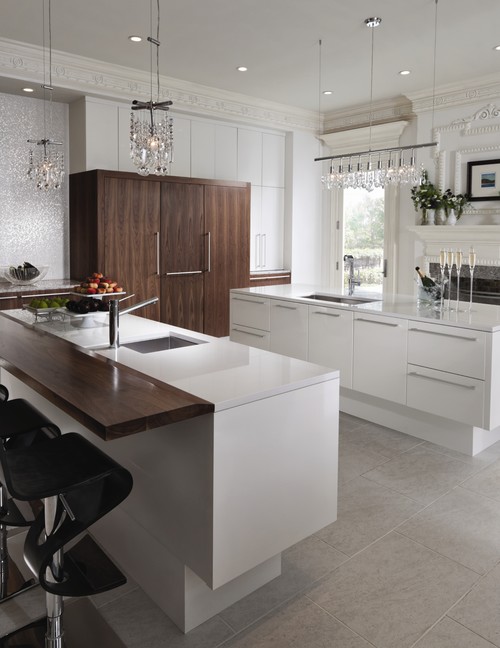
Preventing Future Thermofoil Cabinets Peeling Issues
After successfully repairing your thermofoil cabinets peeling, it’s essential to implement preventive measures to avoid future issues with peeling cabinet laminate. In this section, we will discuss routine maintenance tips, choosing the right materials to prevent cabinet peeling, and upgrading your kitchen cabinet repair knowledge to ensure lasting results.
- Routine Maintenance Tips for Peeling Cabinets:
a. Regularly clean your kitchen cabinets with a mild soap and a soft cloth to remove grease, dust, and debris that can contribute to the deterioration of the thermofoil surface. b. Avoid using harsh chemicals, abrasive cleaners, or scouring pads that can damage the laminate finish. c. Protect cabinets near heat sources, such as ovens or stovetops, by installing heat shields or maintaining a safe distance between the appliances and the cabinets. d. Address any plumbing issues or leaks promptly to prevent water damage to the cabinets and reduce the risk of peeling laminate cabinets. e. Inspect your cabinets periodically for signs of wear, and address any minor cabinet peeling issues promptly to prevent more extensive damage.
- Choosing the Right Materials to Avoid Peeling Cabinet Laminate:
When installing new cabinets or replacing damaged ones, consider the following factors to minimize the risk of thermofoil cabinets peeling:
a. Opt for high-quality thermofoil or laminate products that are known for their durability and resistance to heat and moisture. b. Ensure proper installation by following the manufacturer’s guidelines or hiring a professional kitchen cabinet installer. c. Consider alternative materials, such as solid wood or plywood, which may be less prone to peeling cabinets issues.
- Upgrading Your Kitchen Cabinet Repair Knowledge:
Continuously learning about the latest cabinet door repair techniques, materials, and products can help you maintain the beauty and functionality of your thermofoil cabinets for years to come. Stay informed by:
a. Reading industry blogs, forums, or publications for updates on new materials, products, and best practices. b. Attending workshops or webinars focused on repairing cabinet doors and maintenance. c. Seeking advice from professionals or experienced DIYers when facing challenging thermofoil cabinets peeling issues.
By following these preventive measures and staying informed, you can minimize the risk of future cabinet peeling issues and ensure the lasting beauty and functionality of your kitchen cabinets. In the next sections, we will discuss when to seek professional help and offer concluding thoughts on cabinet door repair.
When to Seek Professional Help for Peeling Cabinets
While many thermofoil cabinet doors peeling issues can be addressed with DIY kitchen cabinet repair, there are instances when seeking professional help is the best course of action. In this section, we will discuss recognizing the limits of DIY thermofoil cabinets peeling repair, finding a reliable cabinet door repair service, and ensuring quality workmanship for peeling cabinet laminate fixes.
- Recognizing the Limits of DIY Thermofoil Cabinets Peeling Repair:
Seek professional help for your peeling cabinets in the following situations:
a. The extent of damage is too severe, affecting the structural integrity of the cabinets. b. The core material underneath the peeling laminate cabinets is damaged, requiring more extensive repairs or replacement. c. The cabinets are custom-made or have unique features that require specialized knowledge or tools for repair. d. You are not confident in your ability to achieve professional results or lack the necessary tools and materials.
- Finding a Reliable Kitchen Cabinet Repair Service:
To find a trustworthy professional for your laminate cabinets peeling repairs, follow these steps:
a. Ask for recommendations from friends, family, or neighbors who have had similar kitchen cabinet repair work done. b. Research local cabinet repair services online, reading reviews and testimonials to gauge the quality of their work. c. Request quotes from multiple service providers to compare prices, services offered, and turnaround times. d. Verify the service provider’s credentials, such as licenses, certifications, or memberships in professional organizations.
- Ensuring Quality Workmanship for Peeling Cabinet Laminate Fixes:
Once you have selected a professional cabinet door repair service, take the following steps to ensure quality workmanship:
a. Clearly communicate your expectations and the desired outcome of the repair work. b. Request a written estimate or contract detailing the scope of work, materials to be used, and the expected timeline. c. Monitor the progress of the repairs and address any concerns or questions promptly. d. Inspect the completed work to ensure it meets your expectations and aligns with industry standards.
By recognizing when to seek professional help for your cabinet peeling, finding a reliable kitchen cabinet repair service, and ensuring quality workmanship, you can achieve lasting results and maintain the beauty and functionality of your thermofoil cabinets. In the final section, we will offer concluding thoughts on cabinet door repair.
Conclusion and Final Thoughts on Kitchen Cabinet Repair
Addressing thermofoil cabinets peeling issues promptly and effectively can significantly extend the life of your kitchen cabinets and maintain their aesthetic appeal. In this comprehensive guide, we have covered the process of identifying the extent of damage, gathering essential tools and materials, executing a step-by-step repair, preventing future laminate cabinets peeling issues, and recognizing when to seek professional help for cabinet peeling.
As you embark on your kitchen cabinet repair journey, keep these key takeaways in mind:
- Accurate assessment of the extent of damage is crucial for determining the appropriate repair approach for thermofoil cabinets peeling.
- Having the right tools, materials, and workspace preparation is essential for achieving professional results in peeling cabinet laminate repair.
- Following a step-by-step process and paying attention to detail can lead to successful cabinet door repair, restoring the appearance and functionality of your cabinets.
- Implementing preventive measures and staying informed about the latest cabinet door repair techniques can help minimize the risk of future peeling cabinets issues.
- Recognizing when to seek professional help and ensuring quality workmanship can ensure lasting results and satisfaction with your repairing cabinet doors.
In conclusion, taking a proactive approach to addressing thermofoil cabinets peeling and performing regular maintenance will not only improve the appearance of your kitchen but also enhance the overall functionality and longevity of your cabinets. By applying the knowledge and techniques provided in this guide, you can confidently tackle peeling laminate cabinets repairs and enjoy a beautiful, functional kitchen for years to come.


